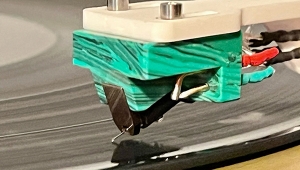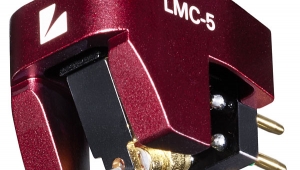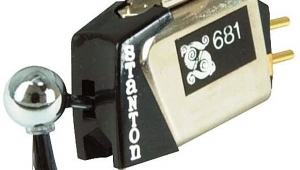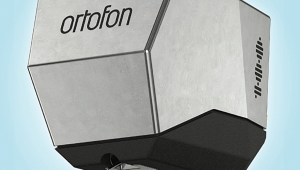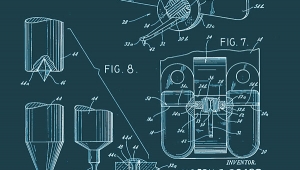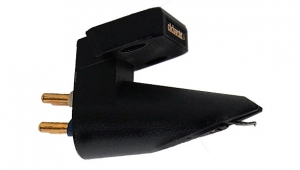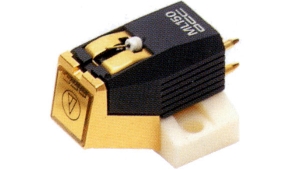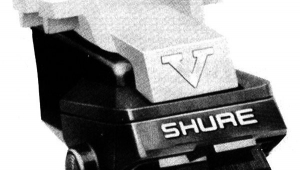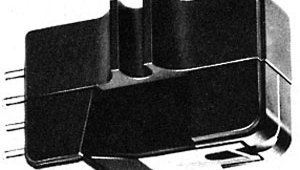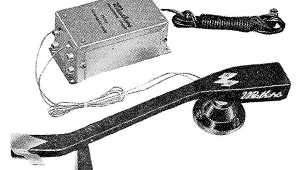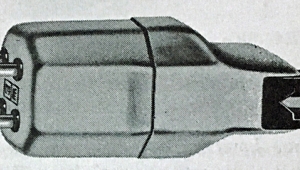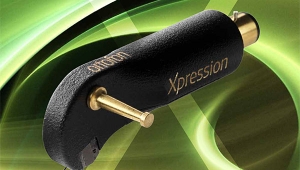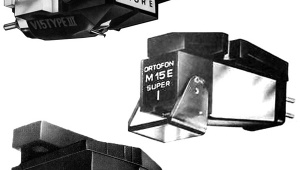| Columns Retired Columns & Blogs |
ZYX R-1000 Airy S phono cartridge Another Page
There are records in my collection I've owned and loved for more than 30 years, and after enjoying them on virtually countless combinations of different components, I've formulated a pretty good idea of what they sound like. In every instance, the ZYX sounded precisely like the sound of those records, nothing more, nothing less.
Barkeep? Total the bill, please, I'm leaving early. I hear some of you thinking those very words.
In a perfect world, I'd indulge myself by describing cartridges only in musical terms. But there's more to them than that. Take, for example, moving-coil cartridges' notorious propensity to ring, which makes some of them sound in the trebles the way an uncontrolled amp sounds in the bass: boomy—except it's the brightness that booms, not the bass, if you see what I mean. That's a quality I can't describe in a manner reserved for a conductor or a pianist. ("Maestro Previn had trouble letting go of the highs this evening. He also hummed and scratched a little.")
That said, I'm happy to tell you that the ZYX Airy S exhibited nothing in the way of treble ringing. Used in my Naim Aro, Rega RB300, and Linn Ekos arms (the latter two fall squarely into the medium-mass camp, the former seeming somewhat lighter), the Airy was also free from the sorts of bass exaggerations associated with poor component matching or a poorly designed suspension. It also tracked well, as gauged both by the Hi-Fi News & Record Review Test Record and through normal listening.
As for listening for pleasure, and despite the fact that I kept the Airy S longer than usual and played and enjoyed literally hundreds of LPs with it, I came to realize that everything I need to tell you about the Airy's sound can be done with the aid of one good record: the Academy of St. Martin-in-the-Fields and the Choir of King's College, Cambridge, performing Vivaldi's Gloria and the Pergolesi Magnificat under the direction of David Wilcocks (Argo ZRG 505). This ca-1966 LP combines lovely, clear sound with magnificent performances, notwithstanding such matters of taste and artistic judgment as diction, ensemble size, the sharpness of certain lines, etc., and confronts a phono cartridge with a variety of sonic challenges. More important, the Vivaldi in particular is brilliant, timeless music; the component that fails to make that plain is a failure through and through. The Airy S was no failure.
The "Domine Deus"-"Agnus Dei" portion of the Gloria has the great mezzo-soprano Janet Baker in good voice, accompanied by organ and solo cello along with the full chamber group and choir. It's a model challenge—for the singer's pitch, tone, and diction, for the sense of line and flow (especially in the organ part), and for the cello to keep its musical poise and spatial perspective during the choral and orchestral parts. The Airy was a virtually ideal performer in every one of these respects.
In the "Domine Deus"-"Rex caelestis," the Airy reproduced the sound of soprano Elizabeth Vaughan with the right scale, and the sonic image of her voice had a good sense of wholeness, as well as crisply precise and stable placement on the stage: I've simply never heard better. Similarly, as the different sections of the choir came and went in the "Propter magnum gloriam," their positions on the stage were signaled as realistically as possible in the context of hi-fi (which is to say, "fake-real," because the live experience doesn't sound anything like that, spatially—but a very precise and convincing sort of "fake-real" indeed).
Throughout the piece, but especially in the "Et in terra pax hominibus"—harmonically the most remarkable movement, I think—different voices track one another, note for note, over the course of a measure or two: The violins double the sopranos, the reed organ doubles the string basses, and so forth. The Airy was clear enough to let me hear and identify all the musical sounds at all times. Further, it gave those string basses real weight, force, and timbral richness, without slowing the tempo of their playing. And as to rhythmic performance, the Airy followed the many subtle ritardandos in the performance—again, especially in this movement—in a musically convincing and involving way.
Even the ZYX's fine tracking was apparent, in the joyous "Cum sancto spiritu" that concludes the piece. That's where the sopranos really belt it out.
What the ZYX lacked most notably was some of the texture I get from this and other recordings using different cartridges. It also lacked something in the way of nuance—not detail per se, but the ability to present detail with the right dynamic and temporal shadings, in a manner that makes the final result sound as if actual people, rather than machines, had something to do with it.
The Airy S was very dynamic overall, yet something about it prevented me from getting a full sense of force or effort or, again, humanness in the singing and playing. The cello obbligato had more of a sense of being coaxed by human hands when I played the record with a borrowed Tubaphon TU3 (a cartridge of similar output and compliance that I mounted, as I did the ZYX, in its own, separate Naim Aro armtube for easy comparison). The occasional clicking of organ keys was audible with both cartridges, but, listening with the Tubaphon, those sounds and the notes they occasioned combined to create a slightly more organic and, ultimately, involving feel. A very subtle shortcoming, but one that signaled its presence with a great variety of records, not just this one.
Conclusions
I enjoyed my time with the ZYX R-1000 Airy S. I was able to get from it what I needed, even if I had to lean forward a little, mentally, to do so. No big deal. And I respect the opinion of anyone who suggests that the texture and nuance I missed are in fact distortions, and that I'm better off without them. Older audiophiles in particular, having lived through a time when gross, fuzzy distortion was the bugaboo du jour, will surely revere such smoothness—and the Airy S was nothing if not smooth.
It was anything but hairy.
Now, as much as it pains me to leave the subject of audio, howsoever briefly, I must: In these uncertain economic times, even the comfortable must spend their discretionary money wisely. And $2995 is a lot of money. You can buy a front-loading washer and dryer and an extra-large gas range for that kind of money. Just off the top of my head.
There are phono cartridges that better suit my tastes in music, and sound better to me, than the Airy S, and while one of them costs even more (the $4000 Miyabi 47), at least two of them cost significantly less (the $1850 Ortofon Jubilee, the $2000 Lyra Helikon SL). For me, then, the ZYX Airy S would not be a superior value in terms of performance.
For a listener with different priorities, however—especially the person who above all wants smooth, clean sound from LPs, while still maintaining a good level of musical involvement—the ZYX looks even better, an impression from which the cartridge's value from a technological point of view does not detract.
A very respectable thing, then: The ZYX R-1000 Airy S didn't quite speak to my soul, but yours may perk up on first listen.
- Log in or register to post comments
